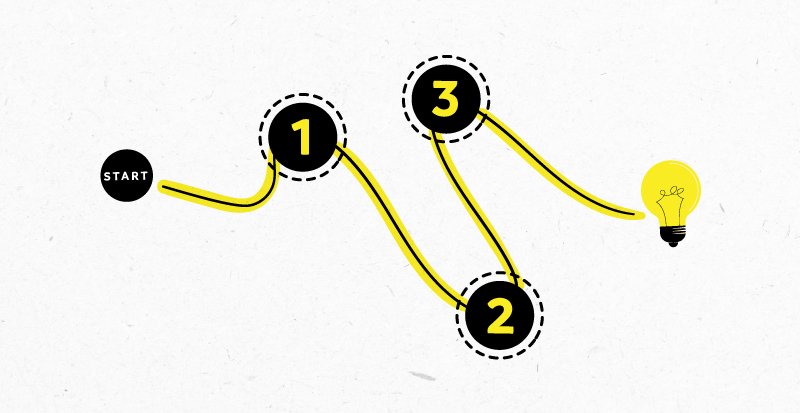Cracking the Code: How to write a Creative Brief in 3 Simple Steps

Whether the creative brief is initiated by a brand or from within an advertising agency, it is extremely necessary to develop a campaign that accomplishes the intended business goal and connects with its target audience. You can ask anyone in advertising… if you try to skip the brief, it’s very likely that you will end up having to scramble to develop it mid-project and bring it to the team after work has already started. In such a scenario, valuable time is wasted, and it will be harder to shift the team’s mindset toward the updated direction.
Ugh, but writing a creative brief is so time-consuming and annoying, right? It really doesn’t have to be!
The creative brief is a tool that helps direct the team down the right path to achieve a specific business goal. You can break down the contents of a successful creative brief into 3 simple steps.
STEP 1: What is the business situation?
There is always a reason why a brand needs to develop a campaign, even if it’s a seasonal effort that they produce every year. For example, let’s say that a brand needs a holiday campaign for end-of-year. Only because the effort is repeated every year during the same dates does not mean that the business situation is the same as the previous year. Regardless of whether a campaign falls under a seasonal theme or is a special brand launch, we must look at what is affecting the brand’s equity and performance at the moment of requesting the effort. Naturally, this includes a look at how the brand is performing regarding its goals and how the competitive landscape is affecting the brand’s ability to achieve these goals.
The good news is that brands and their advertising agencies are looking at these trends ongoingly. That’s why the most important part of this first step is a quick conversation between the two. The exchange could be as easy as…
Q1. What would you like to see happen to your brand by the end of the campaign?
Q2. What is the main hurdle that could potentially keep your brand from achieving its goal?
Q3. What unique advantages does your brand offer that will help it overcome this hurdle?
STEP 2: Who is our audience?
Despite our world becoming more automated and digitalized, we are still creating campaigns to connect with other fellow human beings. Keep in mind that it is not necessary to develop a full demographic profile for the creative brief. At this point, what you need to know is what group of people will be most receptive to the brand offering and what is going on in their lives that will help steer their attention toward your brand. The second part of that inquiry is extremely important. Just think about how much more open to a brand’s message you are when it is offering a solution to a problem you need to resolve. Therefore, from a business perspective, you’ll want to pay attention to the current socioeconomic trends that are influencing and creating needs among the brand’s audience. This will also help define the best content and placements to reach the intended target group.
STEP 3: The Key Insight – An undeniable truth for the target audience
Here comes the fun and creative part. If that gives you anxiety, it really shouldn’t. After all, as Erich Fromm said, creativity is the ability to see and to respond. In order to come up with an inspiring key insight, it helps to step back and review your answers to the first two steps from a big-picture perspective. In doing that, you should be able to find an answer to the following question: What fundamental human truth in our product story will make our audience go "yes, this is for me"?
The response to this question will therefore spark the thinking process for all teams involved and most likely result in great advertising that humanizes a brand and fulfills a real-life desire. It should be simple, easy to understand, and limited to one or two sentences. The supporting messages that qualify the key insight will then follow naturally and substantiate what the brand is promising with benefits that it can deliver.
To wrap up…
A creative brief doesn’t have to feel like conquering Mt. Everest. It’s best if you shift your perspective towards visualizing a creative brief like the fields you complete before initiating a customer support chat request. What’s the problem and how can we help? Actually, the simpler you make it, the better. And the more you integrate it into your daily business practice, the more aligned all brand and agency teams will be.
If you would like to collaborate on creating campaigns based on insightful creative briefs, feel free to contact us.
